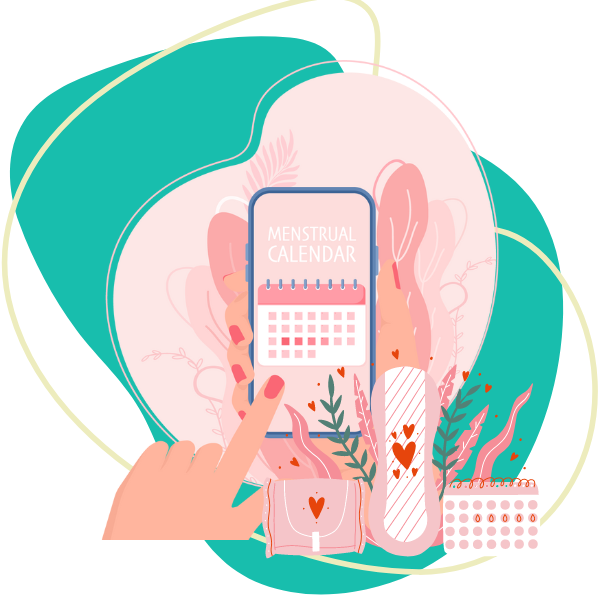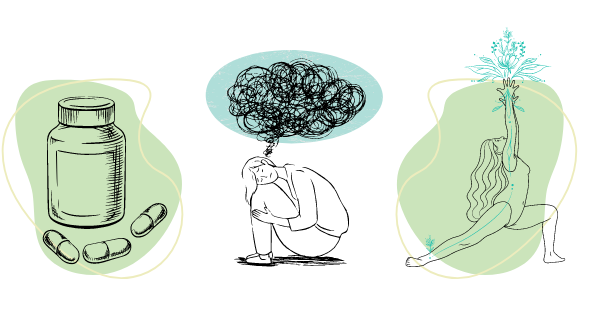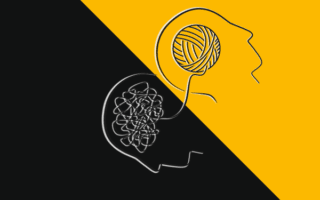
Understanding The Emotional and Physical
Toll of PMDD
A considerable amount of women experience some form of premenstrual symptoms (PMS) but for some women, these symptoms are much more extreme …
Premenstrual dysphoric disorder (PMDD) is a condition that affects millions of women worldwide. Despite its prevalence, many people remain unaware of the condition and its debilitating symptoms.
What is PMDD?
PMDD is a severe form of premenstrual syndrome (PMS), characterized by emotional and physical symptoms that can significantly impact a woman’s quality of life. Most commonly, women with PMDD experience severe depression, anxiety, suicidal thoughts and ideation in the weeks leading up to their period (known as the luteal phase).
It’s estimated that between 5%- 8% of women experience PMDD -approximately 80,000 women in the UK- yet many go undiagnosed or are dismissed by healthcare providers who are unaware of the condition’s severity.
Pop star, Zara Larson recently talked about living with PMDD:
“It’s really severe. I can barely get out of my bed. And it feels really, really bad – and I know that I’m not alone in that. It doesn’t really matter how much success or how much money or everything you want in life; that will still stick around, you know.“
Zara Larson in Grazia
WHAT’S THE DIFFERENCE BETWEEN pmdd AND pms?
While there are similarities between PMDD and PMS such as mood swings, bloating, and headaches, the symptoms of PMDD are more severe and disruptive to daily life.
Premenstrual dysphoric disorder is classified as an endocrine disorder (clinical hormone-based disorder). While PMDD is directly connected to the menstrual cycle, it is not a hormone imbalance; it’s a severe negative reaction in the brain to the natural rise and fall of estrogen and progesterone.
Suffers of PMDD are also at an increased risk of suicide and suicidal behavior.
Overall, the main difference between PMDD and PMS lies in the debilitating impact it has on a person’s ability to function.

how is it diagnosed?
Currently, there are no blood or saliva tests to diagnose premenstrual dysphoric disorder.
The key feature that distinguishes PMDD from other mood disorders or menstrual conditions is when symptoms start and how long they last. Keeping track of your mood in a journal or app is advantageous as it’ll provide a clearer picture of whether the symptoms coincide with the luteal phase of your menstrual cycle.
There are 11 symptoms of which a minimum 5/11 must be present. They are:
- Feelings of sadness or despair or even thoughts of suicide
- Feelings of tension or anxiety
- Panic attacks, mood swings, or frequent crying
- Lasting irritability or anger that affects other people
- Lack of interest in daily activities and relationships
- Trouble thinking or focusing
- Tiredness or low-energy
- Food cravings or binge eating
- Trouble sleeping
- Feeling out of control
- Physical symptoms, such as bloating, breast tenderness, headaches, and joint or muscle pains
These symptoms occur a week or two before menstruation and go away within a few days of your period. Your doctor will also need to look into your medical history and run some tests to distinguish PMDD from diagnoses that present similar symptoms.
Suffers of clinical depression, anxiety, bipolar, and other mental health disorders may still be affected by a premenstrual disorder as well, this is referred to as PME (Premenstrual Exacerbation). The difference between PME and PMDD is that a pre-existing disorder worsens during the luteal phase. This can feel especially unmanageable.
Unlike PMDD, research into PME hasn’t advanced to the stage of receiving an official diagnosis. However, clinical trials have been undertaken, and treatment for PME is currently the same as PMDD
PMDD and PME can impact people with ovaries; that includes transgender and non-binary individuals.
“I would always advise them to keep a diary of their menstrual cycle as well as a diary of the symptoms experienced, including the impact on their daily life…This should be done for at least two cycles…”
NHS GP, Dr Sayyada Mawji
WHY does this happen?
Clinical investigations have heavily pointed towards atypical sensitivity to changes in hormone levels.
A sequence occurs resulting in alterations in the neurological pathways that control your mood and your general sense of well-being.
In 2017, researchers at the National Institutes of Health (NIH) discovered a genetic factor:
“We found dysregulated expression in a suspect gene complex which adds to evidence that PMDD is a disorder of cellular response to estrogen and progesterone…Learning more about the role of this gene complex holds hope for improved treatment of such prevalent reproductive endocrine-related mood disorders.”
NIH’s National Institute of Mental Health, Behavioral Endocrinology Branch, Peter Schmidt, M.D.
“This is a big moment for women’s health because it establishes that women with PMDD have an intrinsic difference in their molecular apparatus for response to sex hormones – not just emotional behaviors they should be able to voluntarily control.”
NIH’s National Institute on Alcohol Abuse and Alcoholism, Schmidt, David Goldman, M.D
Other research has shown that in some cases, PMDD may be linked to stressful and traumatic past events. Poor diet, smoking, and stress have been suggested as worsening factors.
is treatment available?
Treatment for PMDD can vary depending on the severity of symptoms and individual needs. The good news is there are ways to make living with PMDD more manageable:
Therapy: Some women may benefit from therapy to help manage symptoms of PMDD. Cognitive-behavioral therapy (CBT) is one type of therapy that helps to identify negative thoughts and behaviors and teach coping strategies to manage them.
Lifestyle changes: Making lifestyle changes such as regular exercise (including mindful exercises such as yoga or tai-chi), eating a healthy diet, meditation, and getting enough sleep can help manage symptoms of PMDD.
Medications: Some medications can be prescribed to help manage symptoms of PMDD. These include birth control to regulate hormones and reduce symptoms, oestrogen gels or patches, and selective serotonin reuptake inhibitors (SSRIs) to manage mood symptoms.
Alternative treatments: Supplements or/and acupuncture may be suggested to manage symptoms.
Surgery: In cases where all other options have been exhausted, some women have been granted a hysterectomy.
As always, speak with your health provider first.

my doctor is dismissive, HOW CAN I ADVOCATE FOR MYSELF?
Unfortunately, women with PMDD are often dismissed or misdiagnosed but PMDD is a diagnosable condition, and it requires meeting specific criteria so don’t be discouraged against seeing your health provider.
- Always remember that you’re not alone: If you have a support system, you may find it helpful to bring someone who can advocate for you. There’s also an IAPMD support group where you can access a community of people in the same boat as you.
- Stay informed: bookmark or print out this page and the the links provided below and have them ready at your appointments.
- Monitor your menstrual cycle: this way you can see if there’s any correlation between your symptoms and your cycle.
- Ask for a referral: A gynaecologist, endocrinologist, or psychiatrist may no more. Gynaecology is the branch of medicine that deals specifically with the female reproductive system, and endocrinology deals with hormones..
Research into medical conditions affecting women has come a long way but there is still a medical gender gap. Receiving a diagnosis can be a lifeline so, although the journey may be lonely and exhaustive at times, keep going; you deserve adequate healthcare.
CITATIONS & RESOURCES
International Association For Premenstrual Disorders (IAPMD)
National Association For Premenstrual Symptoms (NAPS)
Endometriosis UK
Harvard Health Publishing: It’s Biology Not A Behavior Choice
PMDD: Thousands of Women Share their Experiences
Living with PME
Mind: How is PMDD Diagnosed ?



